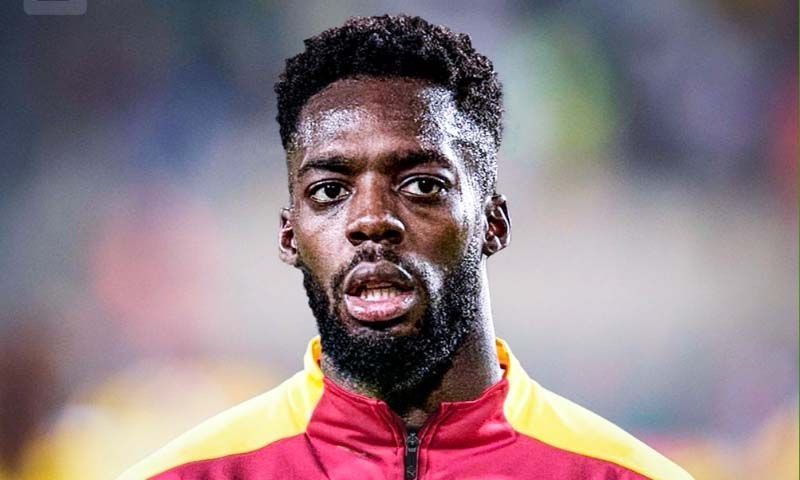
In the realm of football, it’s an exceptional occurrence for players to feature for two distinct countries at the senior level. Some attained this feat due to lenient regulations during their era, while others did so owing to dual citizenship, familial ties, or limited playing opportunities.
In 2004, FIFA responded to a rising trend of naturalizing foreign players by introducing a significant rule demanding players to demonstrate a “clear connection” to any nation they wished to represent. Later, FIFA regulations permitted players to choose any national team as long as they held citizenship of that country.
For a player to switch allegiances, they must not have participated in a competitive match for the initial country, being restricted to friendlies only. FIFA’s approval is mandatory for such switches.
In 2021, FIFA implemented new regulations to address the evolving landscape of international fixtures. Recognizing the growing significance of competitive matches like the Nations League, the new rules allowed players to switch national teams even after competing in official competitions for the first nation, provided they played three or fewer competitive matches before turning 21. Additionally, a three-year gap since the last competitive fixture is required for eligibility to switch, with no such restriction for friendly matches.
These changes aimed to prevent the “stockpiling” of players by nations to block them from representing other countries.
Here, we present 10 notable footballers who donned the jerseys of two different nations:
Certainly! Here’s a more detailed breakdown of each player listed:
1. Ferenc Puskás (Hungary & Spain):

Ferenc Puskás, widely regarded as one of the greatest footballers of all time, achieved success with Hungary in the 1950s before becoming a naturalized Spanish citizen. He captained the Hungarian national team during their golden era and later represented Spain, including appearances at the 1962 World Cup.
2. Thiago Motta (Brazil & Italy):

Thiago Motta, a versatile midfielder, played for prominent clubs like Barcelona, Inter Milan, and Paris Saint-Germain. Born in Brazil, he later obtained Italian citizenship and represented Italy at the international level, featuring in the 2014 FIFA World Cup and Euro 2012.
3. Wilfried Zaha (England & Ivory Coast):

Wilfried Zaha, known for his dynamic playing style, initially represented England at youth levels before switching allegiance to Ivory Coast. Despite early promise with England, Zaha opted to play for the country of his birth, becoming a key figure for Ivory Coast.
4. Diego Costa (Brazil & Spain):

Diego Costa, a powerful striker, played for Brazil before switching allegiance to Spain through citizenship. He featured prominently for Spain in major tournaments, including the 2014 and 2018 FIFA World Cups.
5. Geoffrey Kondogbia (France & Central African Republic):

Geoffrey Kondogbia rose through the ranks in French football before representing the Central African Republic at the senior level. Despite his earlier appearances for France at youth levels, Kondogbia chose to represent his ancestral country.
6. Munir El Haddadi (Spain & Morocco):

Munir El Haddadi, a product of Barcelona’s youth academy, played for Spain before expressing his desire to represent Morocco. Despite initial challenges, he eventually switched allegiance to Morocco and featured for them at the 2021 AFCON.
7. Iñaki Williams (Spain & Ghana):

Iñaki Williams, known for his speed and goal-scoring ability, made a notable switch from Spain to Ghana ahead of the 2022 FIFA World Cup. Despite early success with Spain, Williams opted to represent his Ghanaian heritage at the international level.
8. Michel Platini (France & Kuwait):

Michel Platini, a footballing legend, briefly returned to international football to represent Kuwait after retiring from his illustrious career with France. His cameo appearance for Kuwait marked a unique chapter in his storied career.
9. Declan Rice (Republic of Ireland & England):

Declan Rice, born in England with Irish ancestry, initially represented the Republic of Ireland before switching allegiance to England. He played a key role for England in Euro 2020 and earned a spot in the squad for the 2022 FIFA World Cup.
10. Nacer Chadli (Morocco & Belgium):

Nacer Chadli, born in Belgium to Moroccan parents, initially represented Morocco before switching allegiance to Belgium. He featured prominently for Belgium in multiple FIFA World Cups and UEFA European Championships.
Notable Mentions:
• Alfredo Di Stefano (Argentina/ Columbia & Spain).
Di Stéfano played with three different national football teams, namely Argentina, Colombia and Spain.
• Florent Malouda (France & French Guiana)
• Omar Sivori (Argentina & Italy)
• Rogelio Funes Mori (Argentina & Mexico)
• Denzel Dumfries (Aruba & Netherlands).
























